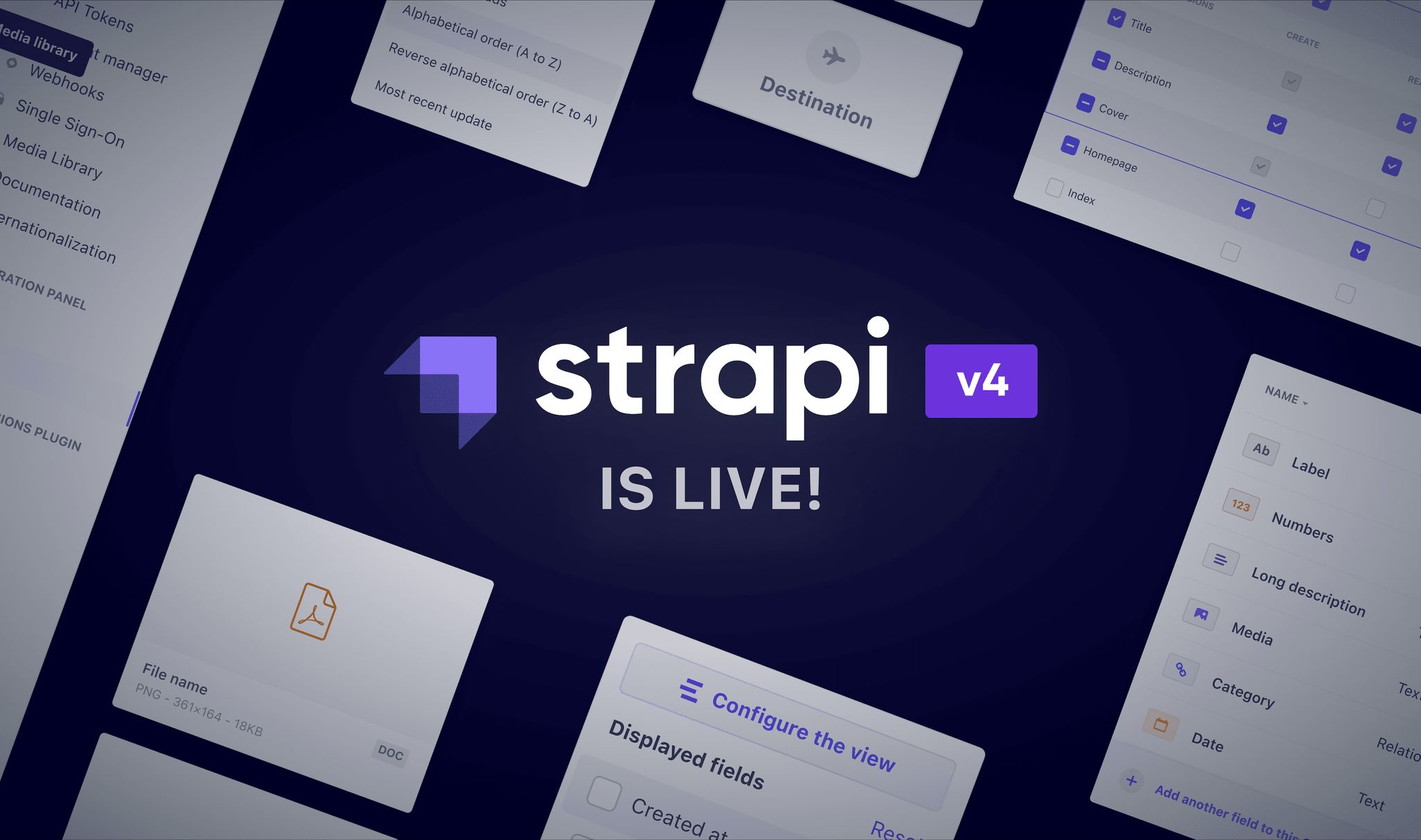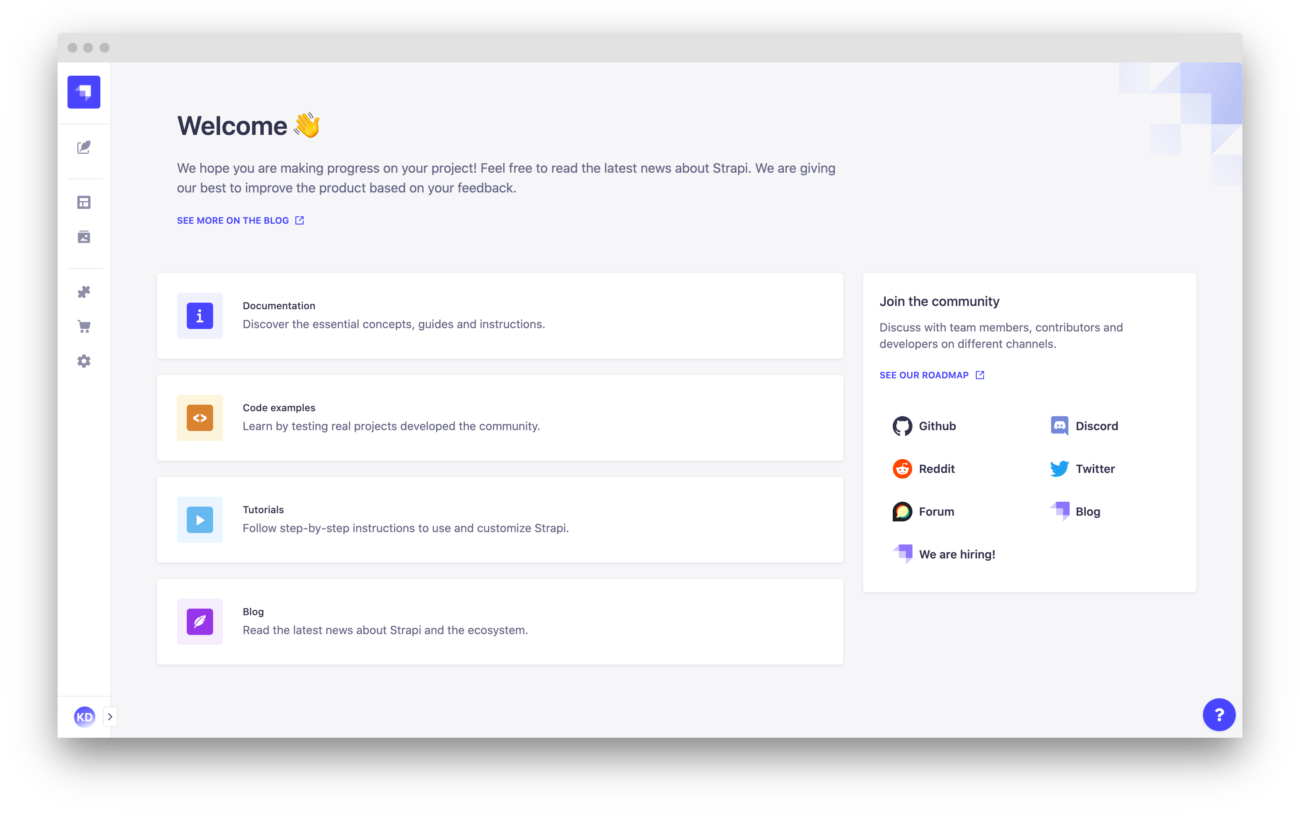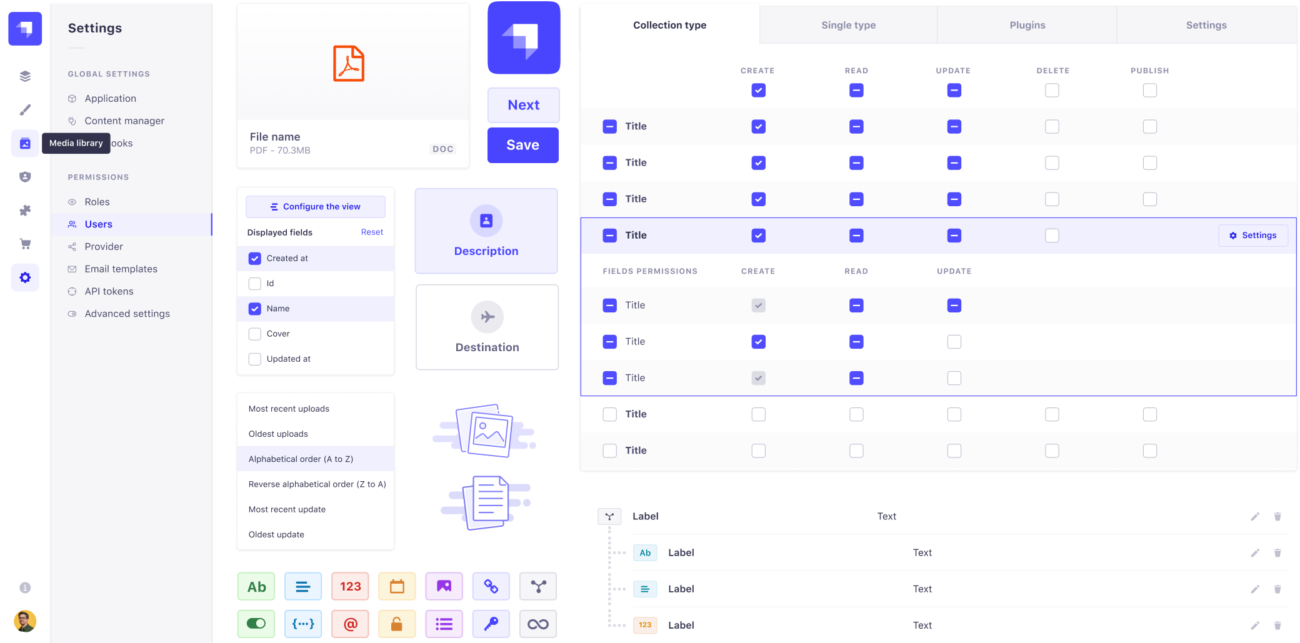Strapi Releases v4 of Headless CMS, Enhances Plugins and API Performance

Strapi, an open source headless CMS, just the release of Strapi v4. The platform's latest version offers a reworked core, allowing users to expand Strapi with plugins and boost API performance with greater ease. It also sports a slick UI and a new design system that's worth diving into.
The latest version of Strapi follows several critical upgrades with key features. Last year, Strapi introduced a stable Strapi v3 with role-based access control, draft and publish features, and SSO authentication. Shortly thereafter, the company launched its v3.6, which introduced free content internationalization.
According to Strapi, its headless CMS is designed to power experiences across websites, mobile applications, and IoT devices, and is an ideal fit for the JAMstack (JavaScript, API, and Markup). Strapi's headless posture also enables it to power front-end frameworks such as React, Gatsby, Vue.js, Next.js, and other static site generators. It also supports multiple databases as well as both REST and GraphQL APIs.
With more than 40 000+ Github stars, 600 contributors, and 3.5 million+ downloads, Strapi is the fastest-growing Node.js CMS. They held their first online global user conference, StrapiConf, in April of 2021, with more than 2,500 live attendees. The company's 2022 conference will be held March 16-17.
What’s new in Strapi 4?
New Design System
Strapi got a complete makeover, primarily around its visual aesthetics and navigation. This includes a refreshed admin UI, which improves accessibility to the admin panel and makes the entire flow more efficient.

Along with the updated admin panel interface, Strapi released the first version of its new Strapi Design System with the goal of enabling everyone to extend and customize their Strapi applications with plugins. To ensure design consistency and provide the best experience to users, Strapi created a component library for plugin developers.

In the new design, Strapi focused on making all the pieces of the interface consistent. They also increased the contrast ratio and created elements with adaptive sizes to render the UI more accessible.
New API to create plugins without pain
Strapi aims to scale its ecosystem and let users choose among a wide variety of high-quality plugins. Conversely, the company also wants to give plugin creators a bigger stage to showcase their work. Overall, Strapi seems focused on giving users more control to customize and integrate with other tools.
Strapi's plugin capabilities have evolved from complex to simplified. For example, in Strapi v3, plugins were loaded based on a file structure, requiring users to configure multiple files. In v4, Strapi took a more programmatic approach, allowing plugins to have their own file structure. Instead of configuring multiple files, plugin developers only need to configure two files at the root of the package:
strapi-server.js for the Server. strapi-admin.js for the Admin panel.
While v3 plugins won’t be compatible with v4 and will require migration, this is a big leap in overall functionality.
More powerful REST and GraphQL API
Strapi added new features to its content API such as pagination, a better filtering format, and the ability to choose what relations to load. Structurally, the Content API and the Admin API are now split, providing greater control over each channel. Overall, Strapi seems more invested in enhancing the value of their REST and GraphQL APIs, both of which deliver on its promise as a headless CMS platform.
Try Strapi 4
There are a number of other noteworthy changes in Strapi v4. To see the complete list, head over to their v4 announcement page.
Strapi says they will continue supporting v3 and fixing critical bugs for at least the next six months. However, they will stop delivering new features for v3, and they encourage users to upgrade to v4 for all new projects.
One thing we'll say is that Strapi makes it very easy to get started on its platform. Once Node.js and npm are properly installed on your machine, simply copy and paste the following command line in your terminal to create your first Strapi v4 project:
npx create-strapi-app my-project --quickstart
About Strapi
Strapi is a leading open-source headless CMS, giving developers the freedom to use their favorite tools and frameworks while helping editors easily manage their content and distribute it to any device or channel. The remote-first company has offices in Paris and San Francisco, and is scaling its team globally. Strapi, Inc. is venture-backed by Index Ventures, Accel, and Stride VC, as well as notable angel investors and open-source experts.